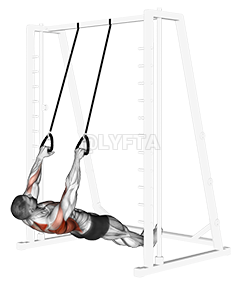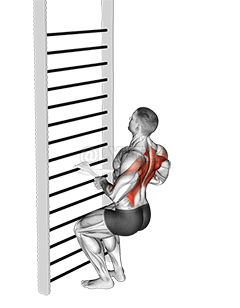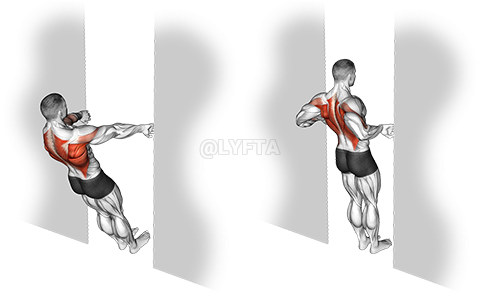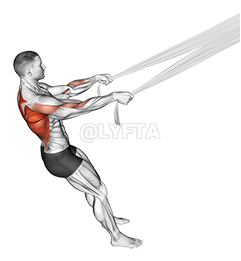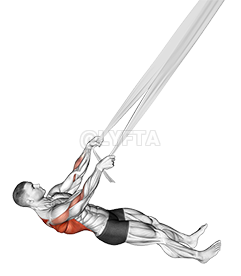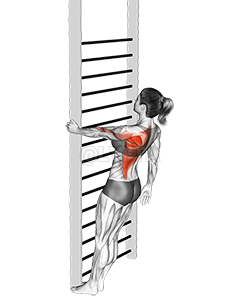
Chin ups
Exercise Profile
Related Exercises:
Introduction to the Chin ups
Chin-ups are a highly effective upper body exercise that primarily targets the latissimus dorsi, biceps, and brachialis muscles, promoting strength and muscle growth. They are suitable for individuals at intermediate or advanced fitness levels looking to enhance their upper body strength and endurance. Incorporating chin-ups into your workout routine can improve your grip strength, posture, and overall body control, making them an ideal exercise for anyone aiming to boost their functional fitness.
Performing the: A Step-by-Step Tutorial Chin ups
- Pull your body upwards towards the bar, ensuring to keep your body straight and your elbows close to your body to engage your biceps.
- Continue to pull yourself up until your chin is above the bar level, hold this position for a moment to maximize the muscle contraction.
- Slowly lower your body back down in a controlled manner until your arms are fully extended.
- Repeat these steps for the desired number of repetitions, ensuring to maintain proper form throughout the exercise.
Tips for Performing Chin ups
- Correct Form: The most common mistake people make while performing chin-ups is not using the correct form. The correct form is to start with a full hang with straight arms, pull up until your chin is over the bar, and then lower yourself until your arms are straight again. Avoid swinging or using momentum to get yourself over the bar, as this can lead to injury and won't give you the full benefits of the exercise.
- Grip: Your grip is also crucial when performing chin-ups. Your palms should be facing towards you and your hands should be about shoulder-width apart. This grip will help to engage your biceps more effectively.
- Breathing: Another common mistake is holding your breath
Chin ups FAQs
Can beginners do the Chin ups?
Yes, beginners can certainly attempt chin ups, but they can be quite challenging as they require substantial upper body strength. It's important to start slowly and gradually build up strength. Beginners can start with assisted chin ups using resistance bands or an assisted pull-up machine. They can also practice other exercises like bicep curls, lat pull downs, and push ups to build the necessary strength. It's always recommended to have proper form and technique to avoid injury, and consulting with a fitness professional can be beneficial.
What are common variations of the Chin ups?
- The Wide-Grip Chin-Up: In this variation, you widen your grip which targets your lats more intensely.
- The Close-Grip Chin-Up: This version involves bringing your hands closer together, which works the biceps more.
- The Mixed-Grip Chin-Up: This variation involves one hand in an underhand grip and the other in an overhand grip, providing a unique challenge to your upper body.
- The Weighted Chin-Up: This advanced variation involves attaching additional weight to your body, increasing the intensity and strength-building potential of the exercise.
What are good complementing exercises for the Chin ups?
- Deadlifts also complement chin-ups as they strengthen the back and core muscles, which are essential for maintaining proper form and improving performance in chin-ups.
- Bicep curls are another exercise that can enhance your chin-up routine, as they target the biceps directly, a muscle group that is heavily engaged during chin-ups, thereby improving your pulling strength.
Related keywords for Chin ups
- Bodyweight back exercise
- Chin up workouts
- Back strengthening exercises
- Home back workouts
- Upper body workouts
- Bodyweight chin ups
- Back muscle exercises
- Fitness routine for back
- Strength training for back
- Bodyweight exercises for back
